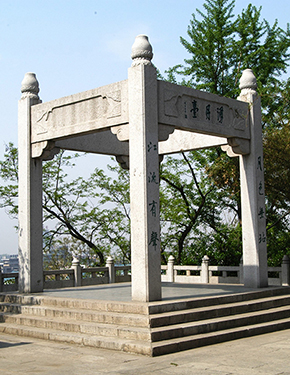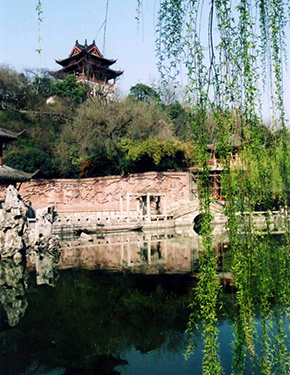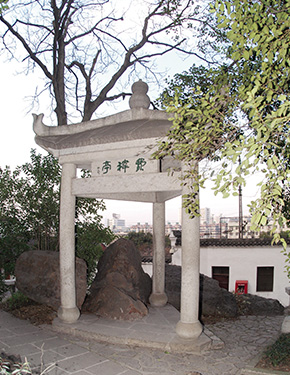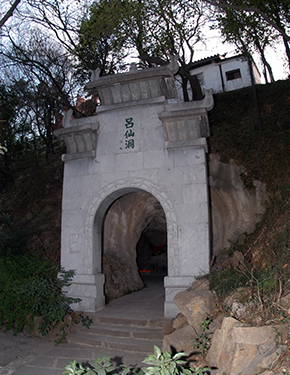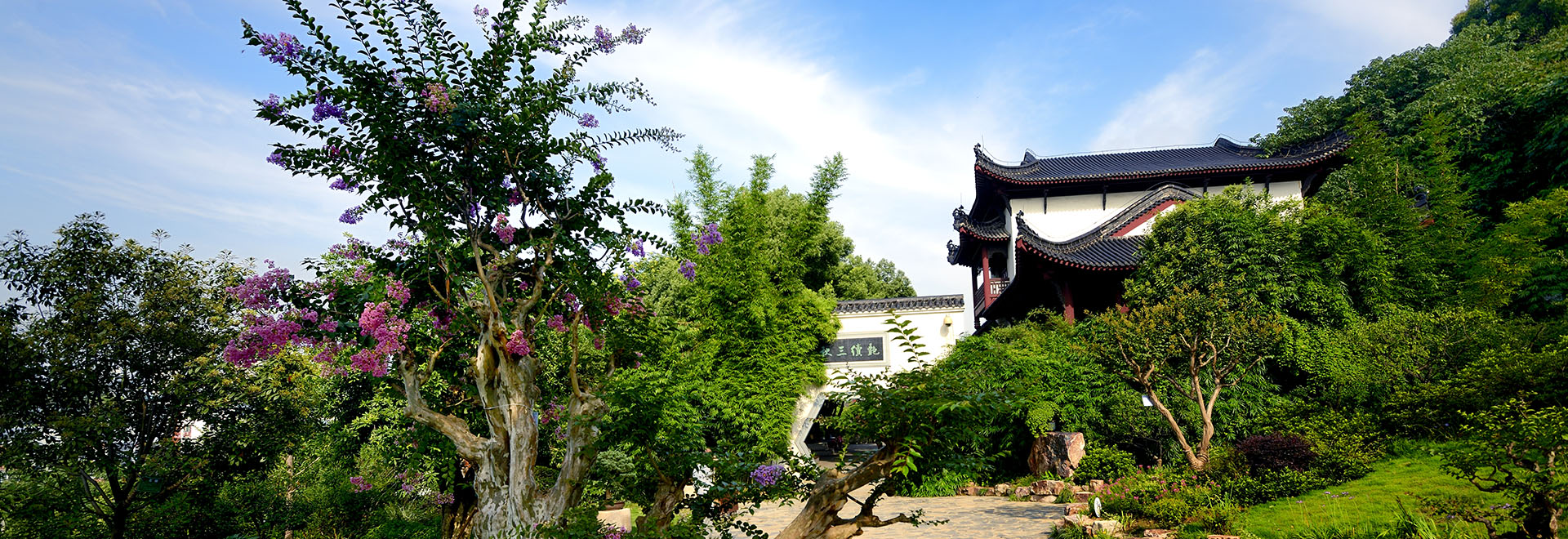
Four Seasons Arch
- Nomal
- Enlarge
- Reduce
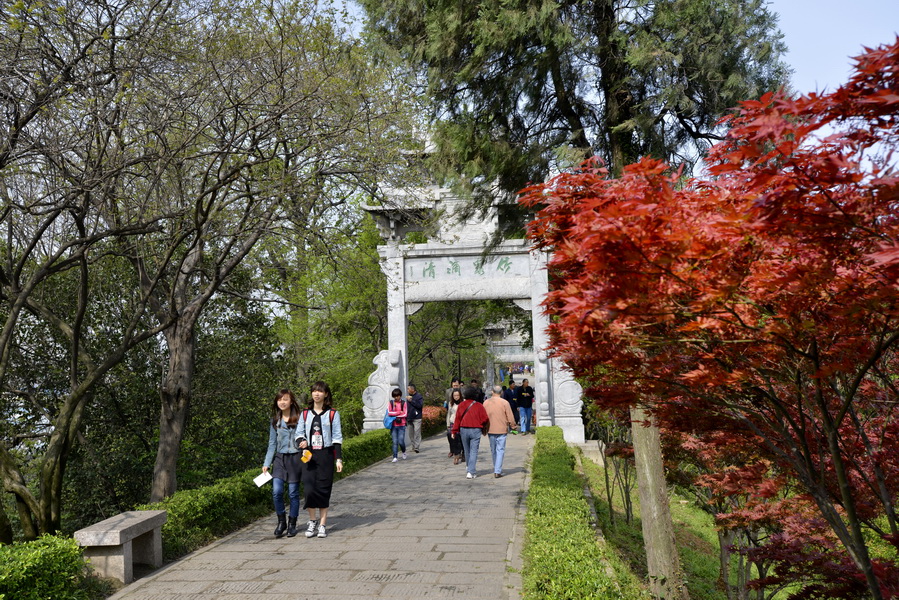
As a Hui-style edifice, the greystone arch makes alive all four seasons of Yellow Crane Tower. There is a distance of 50 m between every two neighbouring bases. Each sub-arch, about 8 m high and 7 m wide, features 2 columns that are supported by 6 stone drums. On the other hand, the upper part of the arch is a triangular roof of 34 bracket sets. There are 12 angles, with 2 resembling “Dragon-Head on the Hip Rafter” and “Fish-Tail on the Ridge;” handsome double eaves stretched out like wings are made true to life. Besides, walls and columns are painted with many lively patterns including “Three Friends—Eagle, Carp and Crane,” “Yellow Crane in the Sun,” “Eagle and Carp in Antiphonal Singing,” “Dragon and Phoenix,” “Two Dragons Playing with the Sun,” “Twin Lions Playing Together” and “Descent of Twelve Dragon Immortals.” The four subarches are carved with Dancing Crane, Flying Crane, Chirping Crane and Perching Crane separately. Besides, each one’s gate banner features lines of poem about the season in question.
First, spring subarch features “Crane Tower in Mist” (west) and “All Green on Gaoguan Mountain” (east). Gaoguan Mountain used to be part of Snake Mountain. Tang poet Li Qunyu says in The Morning of Hanyang Spring, “White clouds hide Yellow Crane Tower from view; green trees make Parrot Island almost invisible.” These inscriptions written by Xu Benyi and Yang Kunbing take a brief look at the main tower’s springscape.
Second, summer subarch features “Lotus Zephyr Spreading a Fragrance” (west) and “Bamboo Dew Showing a Pure Charm” (East). Snake Mountain ever had many bamboos, which won it a name “Purple Bamboo Ridge.” Yet there were once many potted lotuses. Tang poet Meng Haoran gives such account in Missing Xin the Eldest at South Pavilion of this Summer, “From elegant lotuses the zephyr spreads a clear fragrance, from emerald bamboos the dew makes a crisp melody.” As inspired by these lines, the inscriptions tell us what can be appreciated in summertime. The two calligraphers involved are Zhou Yongji and Wan Jun.
Third, autumn subarch features “Splashing White Waves” (west) and “Stretching Crimson Leaves” (east). Bai Juyi, a renowned Tang poet, ever said two lines in Enjoying the Banquet by Censor Liu and Judge Cui and Relishing Together the Splendid Scenery, “Ivory waves splash against the Monk Temple, crimson leaves shroud the Parrot Island.” These inscriptions are handwritten by Huang Delin and Han Bodun.
At last, winter subarch features “Myriad Jade Trees” (west) and “Vast Silverland” (east). Yang Ji, a brilliant poet between late Yuan and early Ming, wrote in Ascending Yellow Crane Tower Again in the Snow, “Myriad jade trees underline the contour of Hanyang; Parrot Island seems half-hidden in this wonderland.” The word “wonder” gave place to “silver” here, thus making alive the pristine snowscape of Yellow Crane Tower. The calligraphers involved are Ba Nangang and Deng Ken.
Tourist Service
- consulting hotline
Service hotline: 027-88875096
Supervision hotline: 027-88848188
027-12301
(Wuhan Tourism Bureau.)
027-87124701
(Hubei Tourism Administration)
- Official qr code.
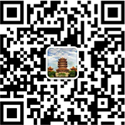
Scan focuses on the yellow crane tower.
- Online consultant
- Complaint and advice

